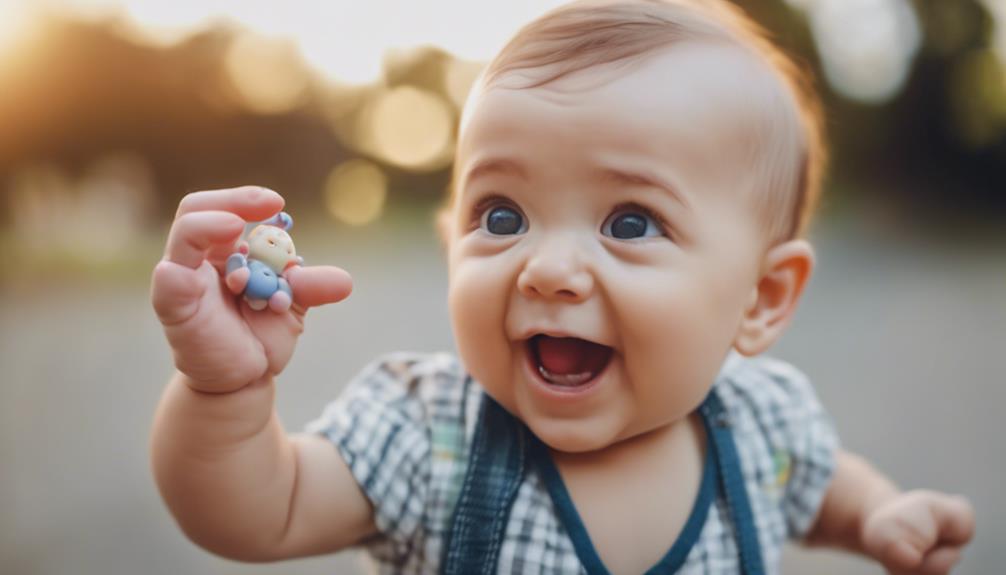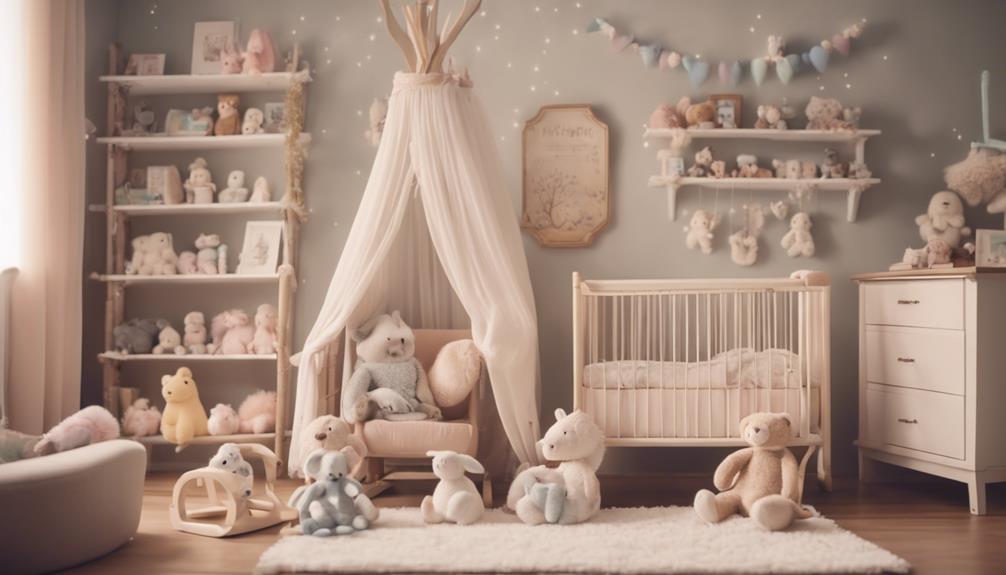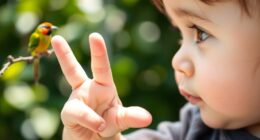To identify signs of a healthy baby, pay attention to important factors such as physical milestones, cognitive development, emotional connections, communication improvements, feeding cues, curiosity, exploration, and motor skill progress. These aspects are crucial for your baby’s overall well-being and advancement. Monitor their progress in movement, problem-solving abilities, attachment behaviors, language growth, and coordination. Recognizing these indicators enables you to better support your baby’s health and development. Delve into these various areas to gain a better understanding of your baby’s strength and growth.
Key Takeaways
- Rolling both ways and standing with support demonstrate strong physical development.
- Remembering familiar faces, problem-solving skills, and language advancement indicate cognitive strength.
- Seeking comfort, forming attachments, and displaying empathy show emotional resilience.
- Increased attention span, exploration, and wonder display curiosity and cognitive growth.
- Proper feeding cues, relaxed demeanor, and content after feeding signify good health and nutrition.
Physical Milestones
Babies achieving physical milestones at 6-7 months demonstrate significant strength and development. At this stage, you may notice your little one rolling both ways, commando crawling, and even standing with a bit of support. These feats of strength are excellent indicators of your baby's growth and progress.
Additionally, mouth exploration, object manipulation, and the recognition of themselves in the mirror are common activities for babies showing strength at this age. You might observe your baby sitting without help and showing a keen interest in listening to music as part of their development journey.
Supporting your strong baby's physical milestones involves engaging activities such as talking, reading, playing, and providing outdoor experiences. Remember to introduce solids safely as your baby's strength and coordination continue to improve.
Embrace and celebrate each new physical milestone your baby achieves as they grow and develop.
Cognitive Advancements
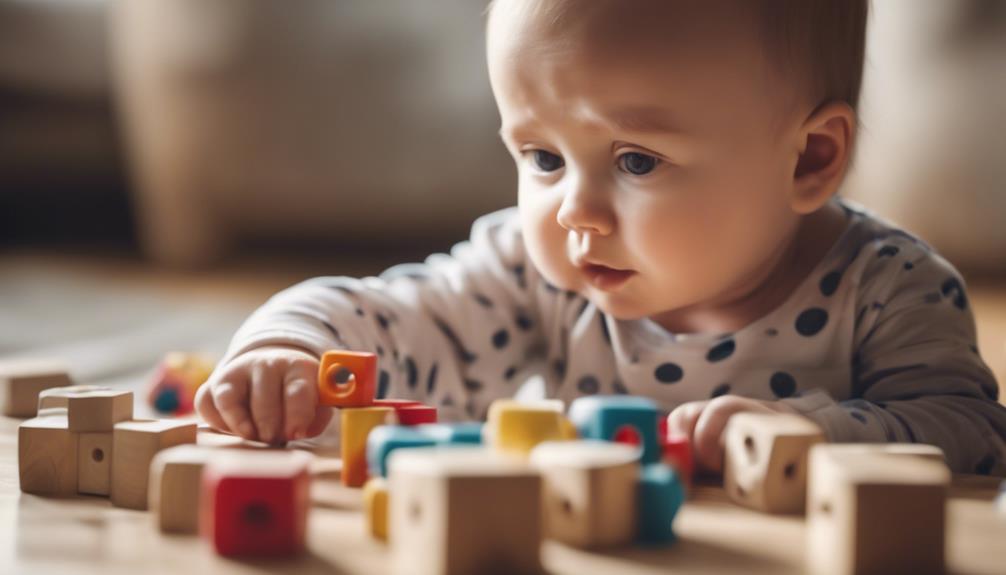
You may notice your baby starting to remember familiar faces and objects as their memory development milestones progress.
Problem-solving skills are likely to emerge as they become more adept at understanding cause and effect relationships.
Additionally, keep an eye out for advancements in language acquisition, such as babbling and attempts to respond to communication cues.
Memory Development Milestones
Displaying enhanced memory, babies at 6-7 months of age demonstrate recognition of familiar faces, objects, and routines. As they reach this stage of memory development, you may notice the following milestones:
- Seeking Comfort: Babies may exhibit attachment signs by seeking comfort from familiar caregivers and becoming distressed when separated from them.
- Remembering Routines: Improved memory skills enable babies to recall simple routines like bedtime or mealtime schedules.
- Anticipating Activities: Babies start to anticipate familiar activities, showing excitement or anticipation as they recognize upcoming events.
- Learning Cause and Effect: With advanced memory, babies can begin to understand cause-and-effect relationships, like pressing a button to activate a toy's music.
These memory development milestones are significant steps in your baby's cognitive advancement, shaping their understanding of the world and strengthening their emotional bonds with caregivers.
Problem-Solving Skills Progress
Enhancing problem-solving skills is a key cognitive advancement seen in strong babies at 6-7 months of age. During this stage of cognitive development, babies may exhibit improved memory retention, enabling them to recall past experiences more readily.
You might notice your baby engaging in pretend play and displaying creativity when faced with simple puzzles or challenges. Recognizing cause and effect relationships in their environment is another sign of advanced problem-solving skills in strong babies at this age.
These cognitive advancements not only enhance problem-solving abilities but also contribute to emotional development. Babies with strong cognitive skills may start understanding basic emotions like happiness, sadness, and frustration, responding appropriately to different situations.
Additionally, they may show signs of attachment by displaying a preference for familiar caregivers and seeking comfort from them in times of distress. Keep nurturing these problem-solving skills and emotional understandings as they're essential aspects of your baby's overall development.
Language Acquisition Advancements
Cognitive advancements in language acquisition emerge as babies start responding to communication and gurgling by 3 months, laying the foundation for linguistic development. Here's what you can expect during this exciting phase:
- Increased Attention Span: Babies begin to focus on objects for longer periods, aiding in cognitive development and preparing them for language learning.
- Exploration Through Interaction: By shaking or rattling objects, babies show cognitive advancements in understanding cause and effect, which is crucial for language acquisition.
- Enhanced Sensory Perception: The sense of touch becomes more sensitive, allowing babies to explore their surroundings and learn about different textures, facilitating cognitive growth.
- Stimulating Language Development: Encouraging language development through conversations and reading not only enhances linguistic skills but also stimulates cognitive growth in babies, fostering overall development.
Emotional Connections
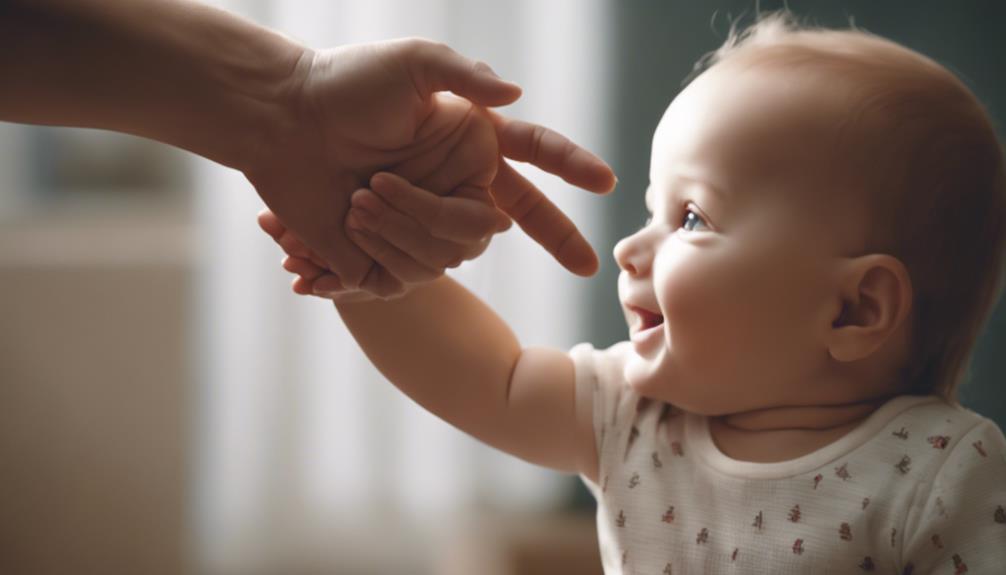
Strong babies begin to form emotional connections by recognizing familiar faces and seeking comfort from parents or caregivers. They display empathy early on through attachment behaviors like seeking solace when upset.
These early signs of bonding and emotional responsiveness indicate a strong foundation for social and emotional development.
Bonding With Caregivers
Developing a strong emotional bond with caregivers is vital for a baby's overall well-being and future relationships. When babies form secure attachments, they exhibit certain behaviors that indicate a strong bond:
- Seeking Comfort: Strong babies may actively seek out their caregivers for comfort, soothing, and reassurance during times of distress.
- Attachment Behaviors: These babies display attachment behaviors like reaching out, making eye contact, and smiling in response to their caregivers.
- Positive Emotional Responses: Strong babies show positive emotional responses when interacting with their caregivers, expressing joy, happiness, and contentment.
- Secure Attachment Style: Babies with strong attachments tend to develop a secure attachment style, paving the way for healthy emotional development and relationships later in life.
These signs of a strong emotional connection between babies and caregivers are essential for the child's health and the establishment of a strong foundation for future relationships.
Displays Empathy Early
Babies who display empathy early often exhibit emotional connections with caregivers through various gestures and responses. These little ones show concern when someone is upset, mimicking facial expressions and attempting to comfort those in distress. Signs of empathy include soothing gestures, sharing toys, and responding to others' needs.
Strong emotional connections are evident when babies understand emotions through their own expressions, body language, and vocalizations. Early displays of empathy indicate not only compassion but also a developing emotional intelligence. Babies who show empathy from a young age are likely to form secure attachments with their caregivers, fostering a sense of trust and comfort.
Seeks Comfort From Adults
When seeking comfort from adults, babies demonstrate strong emotional connections and attachment, indicating a secure bond and trust in caregivers. Babies might seek comfort in various ways, such as reaching out their arms to be held, snuggling closely when feeling distressed, or seeking eye contact and reassurance through their cries.
This behavior not only showcases the baby's emotional intelligence but also highlights their ability to form secure attachments that are essential for healthy development. By responding promptly and sensitively to a baby's cues for comfort, caregivers can help foster a sense of security and emotional well-being in the infant.
Research suggests that babies who seek comfort from adults are more likely to develop healthy relationships later in life, emphasizing the importance of building a strong foundation of trust and security in early childhood.
Communication Progress
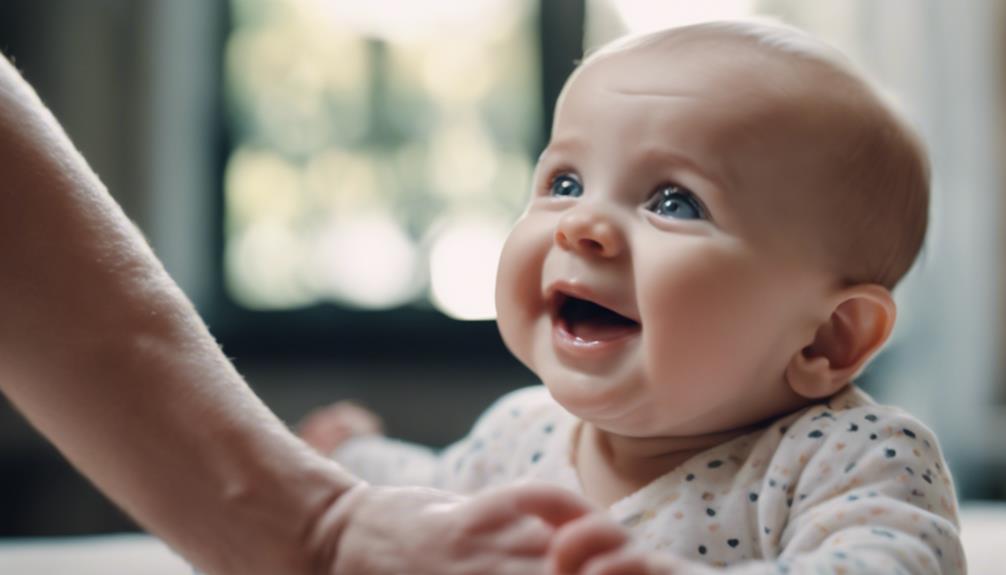
As your baby grows, their communication skills progress rapidly, marked by gurgling attempts and increased attention span. By the age of 3 months, you may notice your baby starting to gurgle and make efforts to respond to communication. Their attention span also increases, allowing them to focus on objects and react to different voices and expressions.
It's vital to encourage language development by talking and reading to your baby, as this stimulates their cognitive growth. Additionally, your baby will begin to show wonder at their surroundings, recognizing people by sight, smell, and voice.
As they continue to grow, the development of emotional responses and communication skills will become more apparent. Keep engaging with your baby through communication, as it plays an important role in their overall development and helps strengthen the bond between you and your little one.
Feeding and Fullness Cues
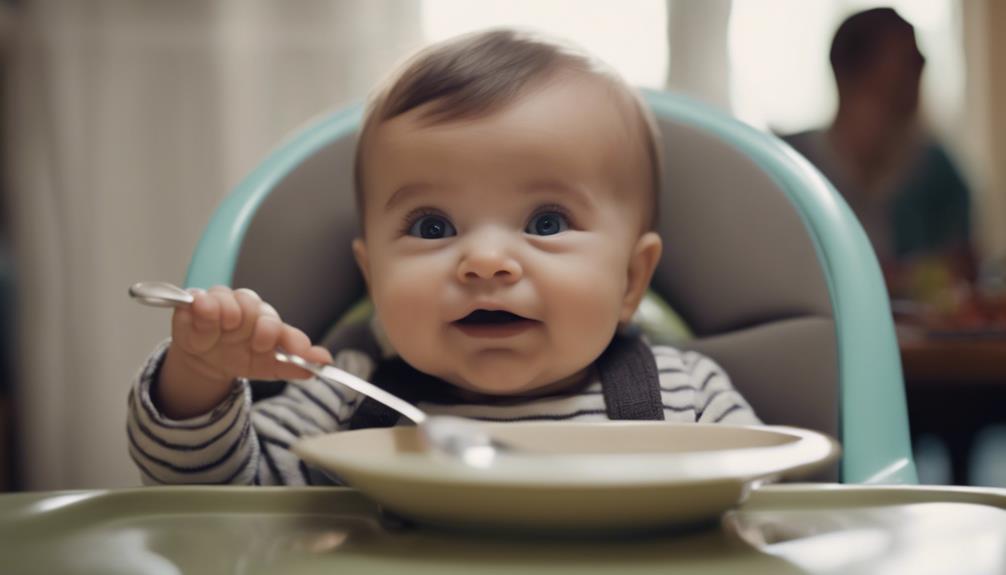
Observe your baby for cues indicating fullness during feedings, such as turning their head away or pushing the bottle aside. Understanding your baby's feeding cues is essential to make sure they're getting the right amount of nutrition.
Here are some signs to look out for:
- Closing mouth or pushing bottle away: When your baby is full, they may stop sucking and show disinterest in feeding.
- Relaxed body language: A content baby will display relaxed body language, indicating they're satisfied with the amount they've consumed.
- Decreased sucking or spitting out the nipple: These actions can signal that your baby has had enough to eat.
- Content demeanor after feeding: If your baby stops crying, appears content, and displays relaxed facial expressions after a feeding session, it's a good indication that they're full and satisfied.
Curiosity and Exploration
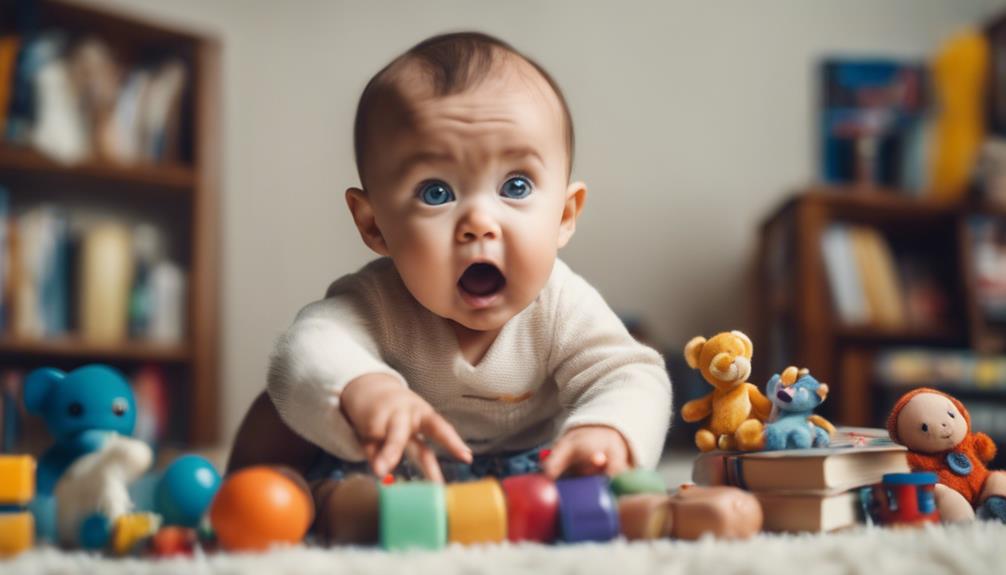
Encouraging your baby's exploration and curiosity is essential for fostering their cognitive development, growth, and development. Strong babies demonstrate their curiosity by actively engaging with their environment, reaching for objects, and enthusiastically experiencing new things. They show a natural desire to learn by observing, touching, and manipulating objects around them.
These babies display a sense of wonder and excitement, exhibiting interest in their surroundings and interactions with caregivers. You may notice early signs of problem-solving skills as they try to understand how toys work or figure out how to reach a desired object.
Curiosity and exploration play a crucial role in your child's development. By encouraging these behaviors, you're helping them learn about cause and effect, develop new skills, and lay a strong foundation for future learning.
Motor Skills Development
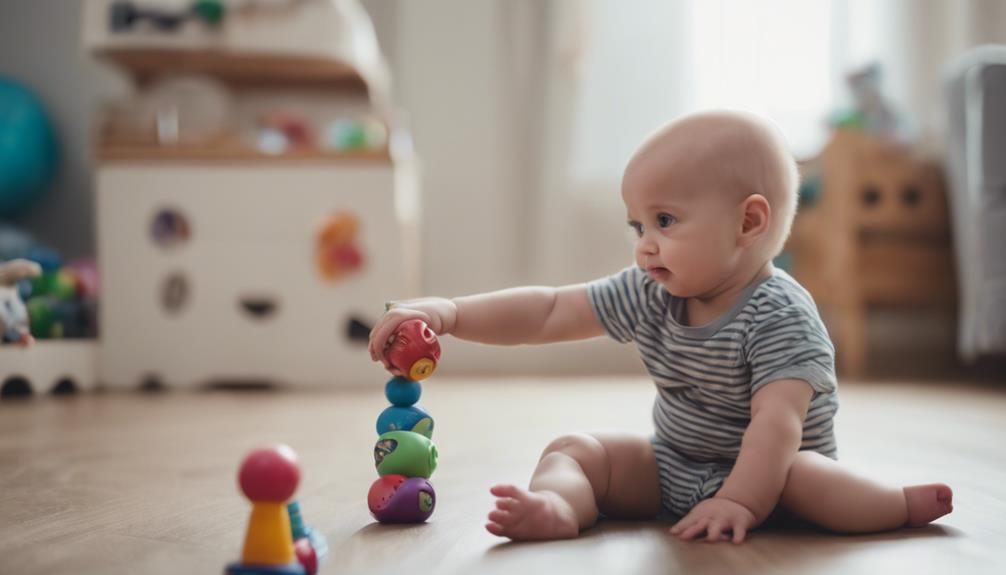
Strong babies typically demonstrate early signs of motor skills development, showcasing improved head control and the ability to sit up by 3 months of age.
To support your baby's development, respond to their cues and encourage their progress in motor skills by engaging in activities that promote movement.
Here are some key markers to look out for:
- Tummy Time Activities: Your baby may start rolling, lifting their head, and pushing their chest up during tummy time sessions.
- Arm and Leg Movements: Strong babies often exhibit arm waving, strong leg kicking, and the ability to grasp objects and bring their hands together.
- Object Interaction: Progress can be seen as your baby reaches for objects, puts things in their mouth, and starts sitting without support around 6-7 months.
- Advanced Movements: Watch for milestones like rolling both ways, commando crawling, and standing with support as your baby grows to strengthen their muscles and coordination.
Remember to provide a safe environment for exploration and movement to foster their motor skills development.
Early Movement Abilities
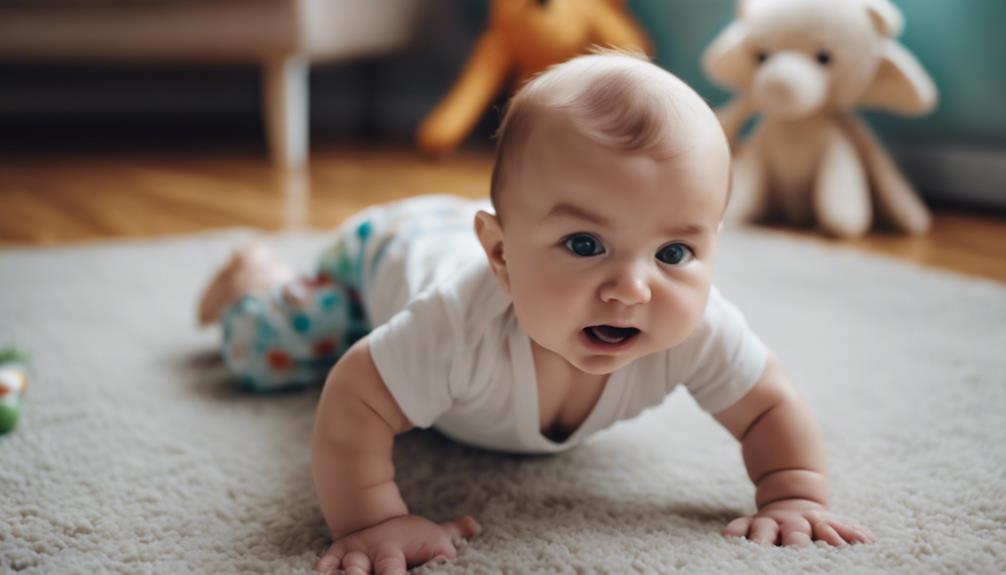
To gauge your baby's progress in motor skills development, consider their early movement abilities as indicators of their physical strength and coordination.
By around 6-7 months, strong babies may start rolling over both ways, showcasing their developing motor skills. You might notice them engaging in commando crawling, where they move using their arms while lying on their stomach.
Standing with support and sitting without assistance are also signs of their increasing strength and coordination. Encouraging your baby to explore objects with their mouth and hands can help enhance their motor skills further.
These early movement abilities are vital milestones that indicate healthy physical development and motor coordination in your little one's journey. Remember that every baby develops at their own pace, so providing a supportive and stimulating environment can help your baby reach their movement milestones in their own time.
Frequently Asked Questions
What Is One of the Best Signs of Good Health in a Baby?
One of the best signs of good health in a baby is steady weight gain and growth on the growth chart. Meeting developmental milestones on time, like holding head up and grasping objects, is key.
How Do I Know if My Baby Has a Strong Bond With Me?
You'll know your baby has a strong bond with you when they can't get enough of your hugs and smiles, constantly seeking your comfort and closeness. They'll light up in your presence, showing love and trust in every glance and touch.
How Can You Tell if a Baby Is Thriving?
You can tell if a baby is thriving by observing consistent weight gain, developmental milestones like smiling and reaching, good muscle tone, regular feeding and sleeping patterns, strong attachment to caregivers, and positive social interactions.
How Do I Know if My Baby Is Advanced?
Wondering if your baby is advanced? Look for early milestones like sitting up or babbling ahead of schedule. Notice strong motor skills, problem-solving abilities, and communication skills. If in doubt, consult your pediatrician for guidance.
Conclusion
So, if you're worried about your baby's development, keep an eye out for these signs of strength.
Remember, every baby is unique and may progress at their own pace.
But with love, support, and guidance, your little one will continue to grow and thrive.
And if you ever have any concerns, don't hesitate to reach out to your pediatrician for reassurance and guidance.
Your baby's future is bright!

